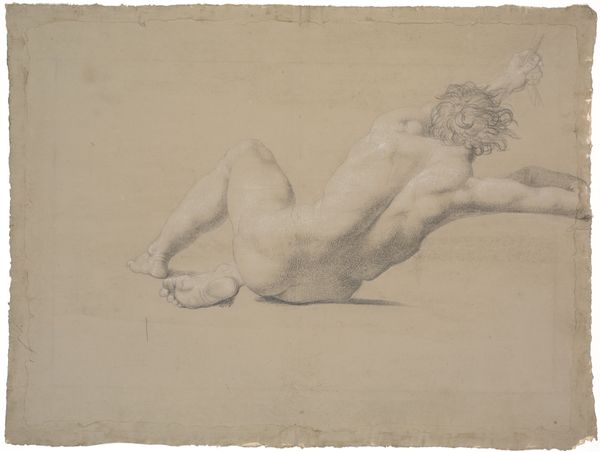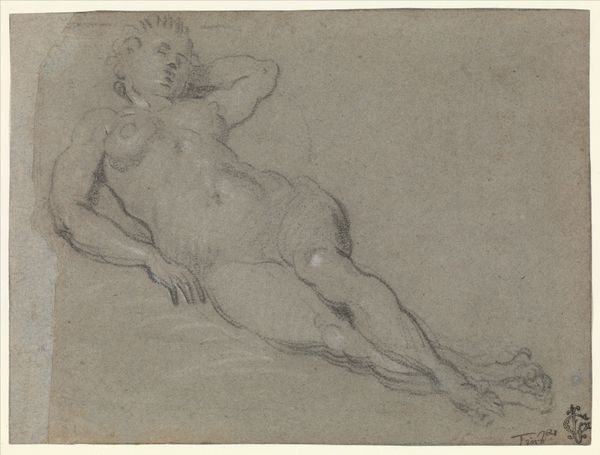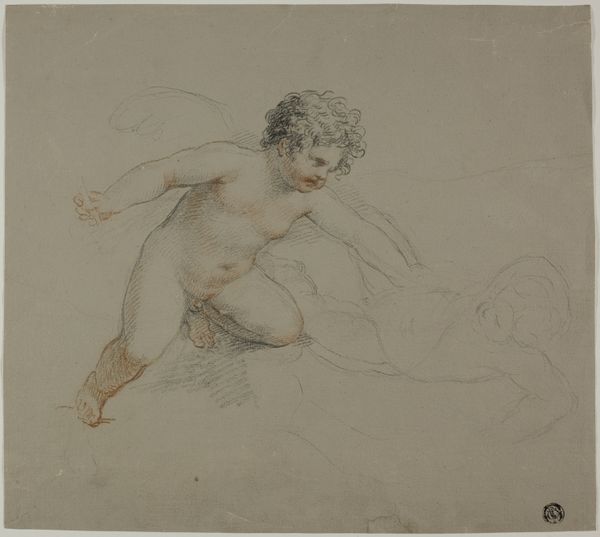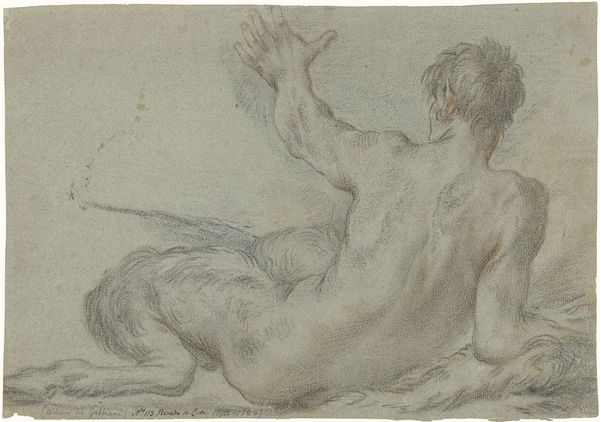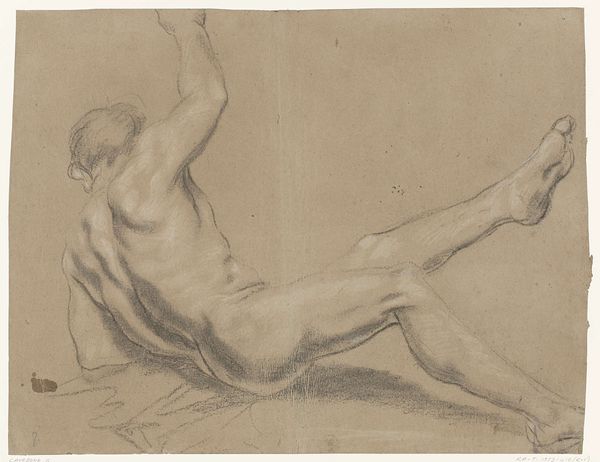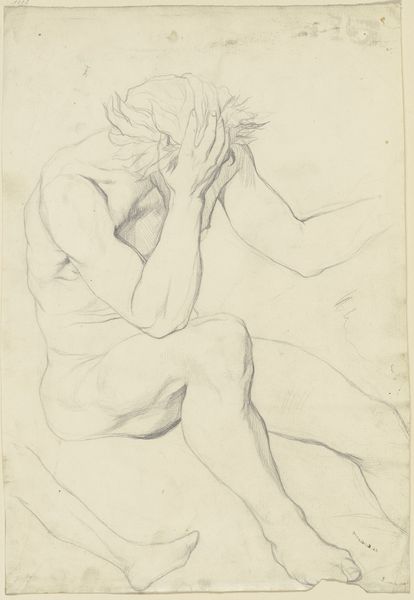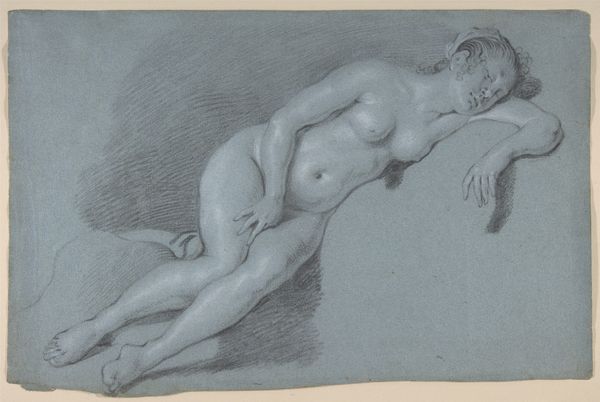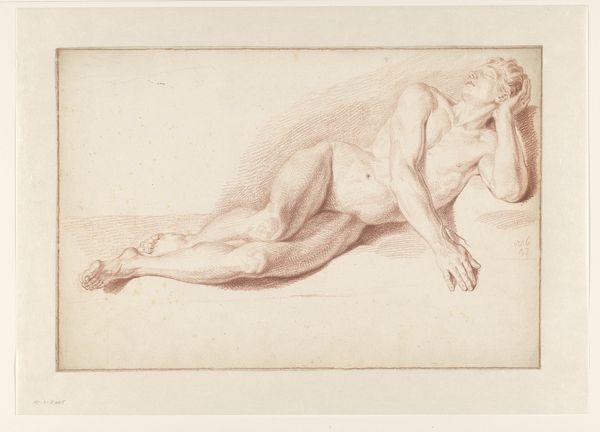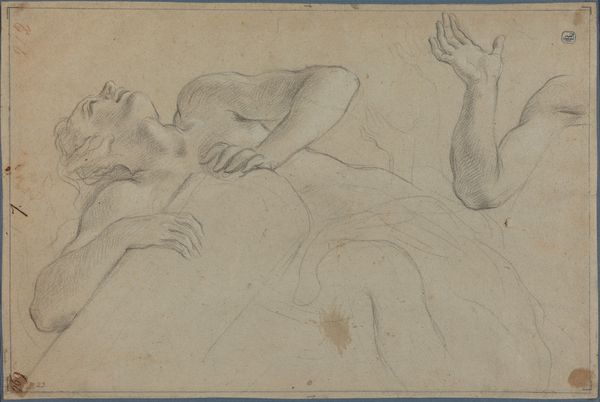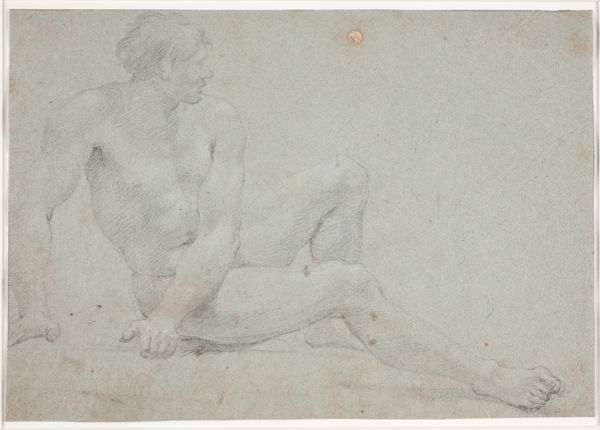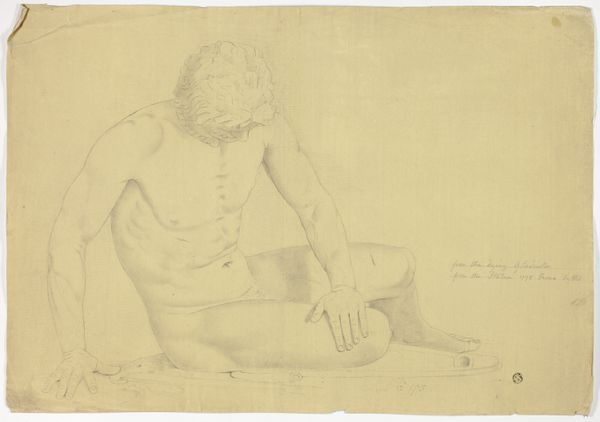
drawing, paper, pencil, chalk, charcoal
#
drawing
#
allegory
#
charcoal drawing
#
figuration
#
paper
#
pencil drawing
#
romanticism
#
pencil
#
chalk
#
charcoal
#
history-painting
#
nude
Dimensions: 125 × 105 mm
Copyright: Public Domain
Editor: Here we have "Putto with Torch," an undated drawing by Giovanni Battista Cipriani, made with pencil, chalk, and charcoal on paper. It's quite delicate. The figure seems to float on the page. What do you see in this piece, in terms of its historical context? Curator: This seemingly innocuous image is ripe with the sociopolitical tensions of its time. These putti, often relegated to mere decoration, are rooted in the classical world, repurposed to signify divine love and power by the patriarchy. Think about how easily these symbols are divorced from their original context. Editor: So, you're saying it’s not just a pretty picture, that these images also bolstered social structures? Curator: Precisely. Consider the torch. Is it a symbol of enlightenment, progress? Or is it a tool of dominance, wielded to illuminate and, therefore, control? We need to interrogate the ways in which power dynamics manifest within art. These visual signifiers, in turn, influence, and sometimes even dictate the aesthetic understanding and moral behaviors within society. What kind of statement might Cipriani be making? Editor: It’s unnerving to consider that this innocent-seeming image could be tied to more complex social structures. I’d naively just appreciated the artwork without that extra level of scrutiny. Curator: Art isn't created in a vacuum. Recognizing those contextual relationships invites richer interpretations. We gain so much insight when we acknowledge how an artwork like Cipriani's actively participates in these networks. Editor: That completely shifts how I see it. Thanks for the insight!
Comments
No comments
Be the first to comment and join the conversation on the ultimate creative platform.
